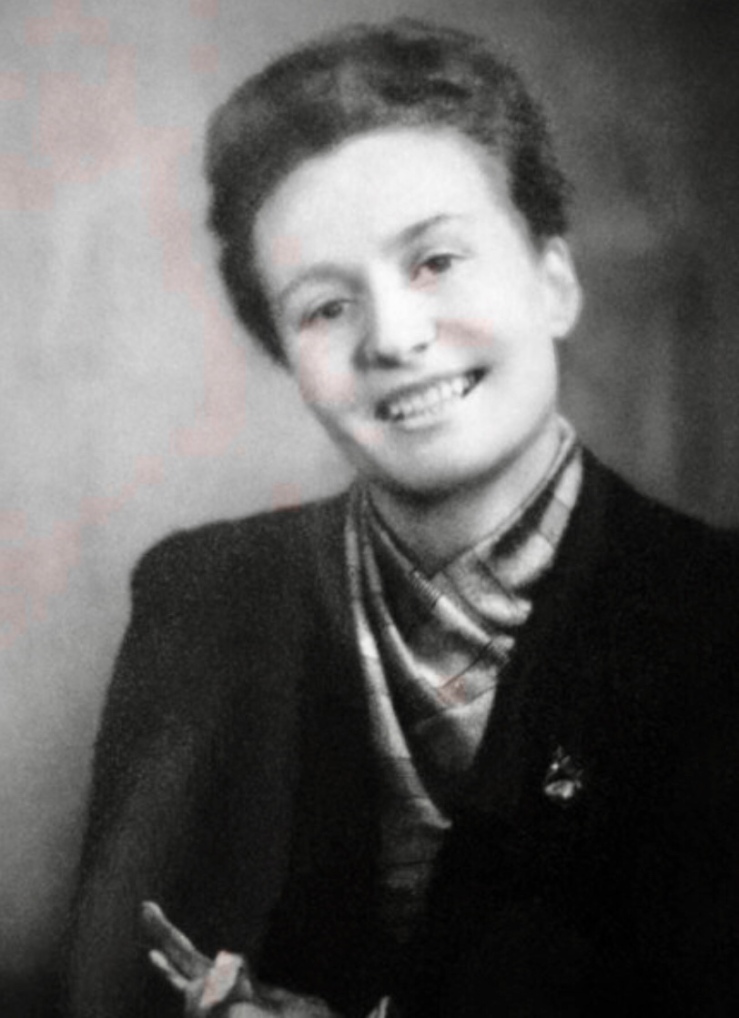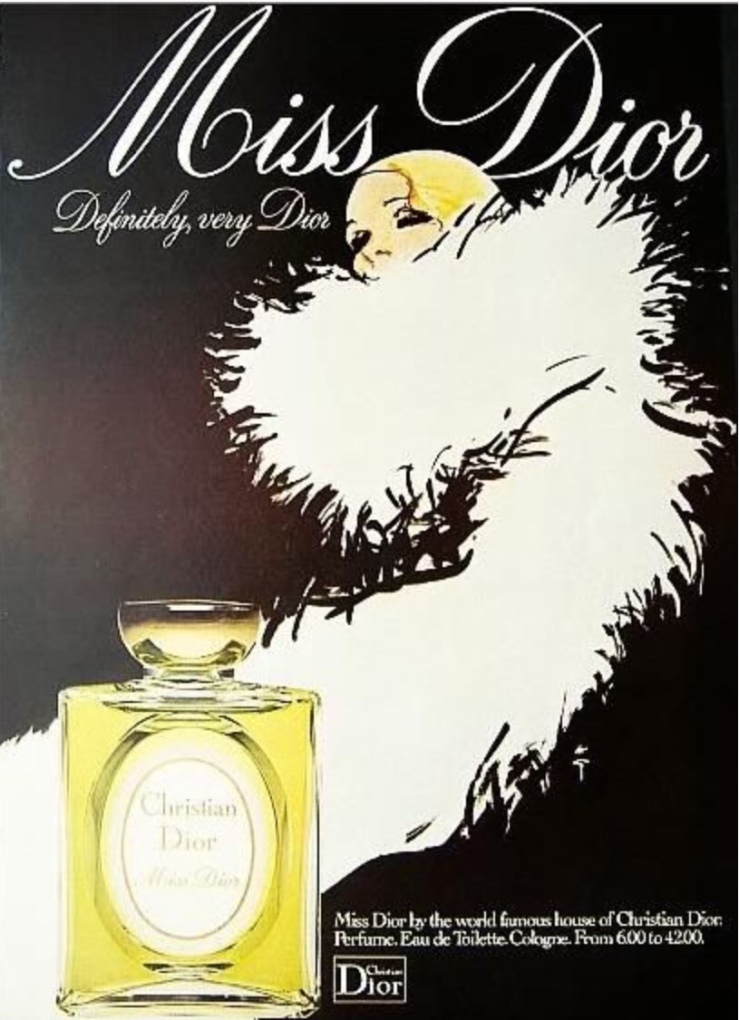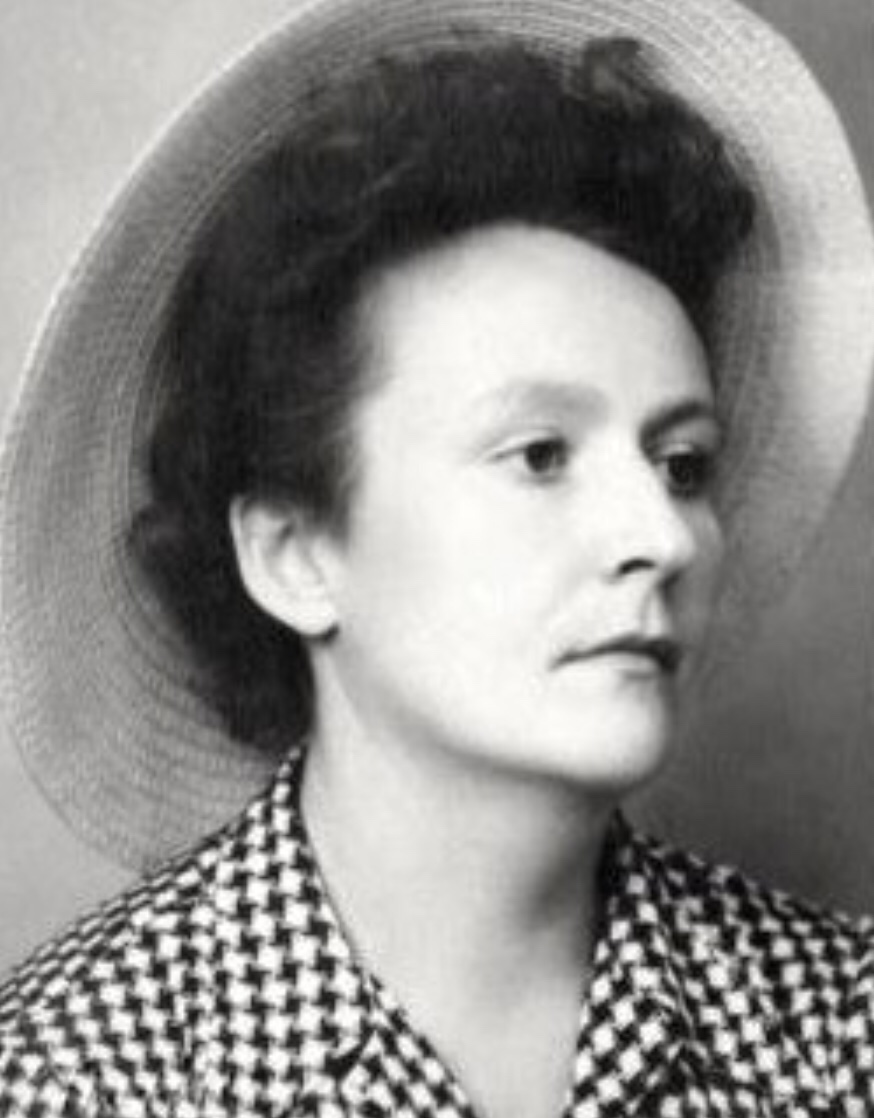Well, as I sit down to write this on Monday afternoon the flames from the fire at Notre Dame Cathedral are lighting up the Paris night sky. Word has come that firefighters have been able to save the two bell towers, and I am so thankful for that. But as I look at the images streaming out of Paris, I am reminded of the images of bombs and swastikas flying throughout that beautiful city. I am also reminded of a courageous and brave woman whose name, in a way, we all know- Miss Dior.
Who Was Miss Dior?
If you live anywhere near a television set, I am pretty sure you have seen the commercials for Miss Dior perfume (with the lovely Natalie Portman) from the couture house of Christian Dior. Have you ever wondered who was Miss Dior? Well, Miss Dior was Christians younger sister, Ginette Marie Catherine Dior.
One of five children born to Maurice Dior and Madeline Martin, the other four were Christian, Raymond, Bernard and Jacqueline. Ginette went by the nickname name Caro, but Catherine is the name she used that would forever hold her place in history.

Pre-War Life
Born in 1917, Catherine was young when misfortune hit the family in 1930. It started with Bernard being diagnosed with schizophrenia and being hospitalized for the remainder of his life. Madeline, the family matriarch, became ill and quickly faded and died. Maurice, the family patriarch, lost the families fortune (made in fertilizer) as a result of the Wall Street crash the year before. And Christian, who was part owner of a small art gallery, saw the gallery go bankrupt.
We don’t know what happened to Raymond and Jacqueline at this time, but we do know that Christian suddenly found himself responsible for his father and his sister Catherine. The family owned a small property in Callin, in the south of France, and it is here that they retreated too.
Callin is known for its flowers, especially roses and jasmine. The house in Callin was surrounded by these beautiful sweet-smelling flowers. A scent that would eventually become part of the Dior couture house. And it is in Callin that Christian taught himself to draw and became an illustrator.
Sometime during 1935-1936 Christian returned to Paris to work Parisian designer Robert Piguet. His illustrations had caught the eye of the designer. Christian wasted no time to get Catherine a job in Paris as well. For three years the siblings lived and worked in Paris, Christian designing haute couture and Catherine selling it in a small boutique.
In June 1940 when the French government capitulated to the Nazi regime, many of the couture houses of Paris closed up shop. Afraid of what could happen to them if/when the Nazi’s occupied Paris, Christian and Catherine returned to Callin.
War Life
By the end of 1941 the war was in full swing and had been going on in Europe for over two years. At this time Christina decided to return to Paris and work for designer Lucien Lelong. It became a moral battle for many in the couture industry in Paris. Did they cooperate with the Nazi regime in order to keep Paris the center of couture or did they pack up and leave?
Christian and Lucien stayed, they designed and fitted couture to the wives and mistresses of the Nazi leaders. They kept the Lucien design house open throughout the war.
In November 1941 Catherine was still living in Callin with her father. Here, she meets Herve Papillault des Charbonniers, a married man twelve years her senior. She instantly fell in love with him. Herve was a founding member of the F2 resistance cell, and he quickly convinced Catherine to join.
F2 was a joint French-Polish resistance based in France that was financed by the British intelligence services. Catherine’s job was to carrying secret documents from one destination to another, to ride her bicycle throughout the area making notes on troop movements and taking photographs, she would then write reports that would be sent back to British Intelligence.
As the war progressed the F2’s work shifted into Paris. Christian was already in Paris and had an apartment at 10 Rue Royale. The apartment became a meeting place for members of the F2, as well as a hiding place when needed. It certainly makes one think that Christian was aware of what his sister was doing and he, more than likely, approved of it.

Captured!
By 1944, the Germans were offering more and more money for information on members of the resistance, as well as having more Frenchmen as collaborators. In early 1944, the noose began to close on Catherine and on July 6, 1944 she was arrested on a Paris street.
Catherine was taken to the security office at the Rue de la Pompe. The address was known for the torture and interrogation that took place within its walls. Catherine’s torture and interrogation were led by a German office along with French collaborators and very much like Noor Inayat Khan (see January blog Madeline the Agent the Gestapo Couldn’t Break), Catherine gave up nothing. She never revealed anything to the Nazis or the collaborators, saving all those she worked with as well as her brother.
July 27, 1944 saw Catherine being transferred to Fresnes prison, just outside of Paris. Christian, upon learning of her capture began to work with Swedish diplomat Raoul Nordling to get Catherine released. He also used his connections with the wives and mistresses of Nazi leaders to find out where his sister was.
By the time Nordling finds a way to get Catherine released, she is no longer in France. Just ten days before the allies liberated Paris, Catherine was moved to Ravensbruck on the last train of deportees on August 15, 1944. Christian and Nordling had just missed her.
Ravensbruck was a female concentration camp started in 1939 under the watchful eye of Heinrich Himmler. It was not designed to kill via gassing like Auschwitz, the plan at Ravensbruck was ‘extermination through work’, they would simply work the prisoners to death. Catherine was only there for less than six months, however during that time she endured more torture, more interrogation, she had her head shaven and she was given the ragged camp uniform to wear, she worked long hours in the munitions plant with very little food, water or sleep. Catherine, like all the prisoners, were stripped of everything that made them human.
In January 1945, Catherine and some other political prisoners were loaded into a cattle truck and moved to Merkkeelberg, near Leipzig. It was one of the coldest winters on record, they traveled in sub zero temperatures with no coats, blankets, any decent clothing that could have kept them slightly warm. They were given no food or water throughout the trip. This was meant to kill as many as possible in transport.
As the Allies neared Germany, the Nazis began finding more ways to kill prisoners faster. Hitler no longer cared about winning the war, that was lost, but no trace could be left of the camps or those who inhabited them, and on April 13, 1945 Catherine, along with hundreds of other prisoners, were sent on a death march.
During a death march, there is no food, no water and no rest. The guards are instructed to shoot anyone who falls behind or falls down. As they marched through the bombed-out city of Dresden, Catherine miraculously escaped!
Re-United and Post War
Throughout Catherine’s ordeal, Christian had not stopped looking for his sister. He continued to use his connections though the couture house, working with Nordling and even consulting his psychic (Christian was very superstitious).
On April 19, 1945 Christian learned that his sister was listed among concentration camp prisoners, but with thousands of displaced persons, they did not know if she is alive or dead.
May 27, 1945 brought the call that Christian had been praying for! Catherine was alive and would arrive the next day in Paris on a train full of deportees. When he arrived at the station, he almost didn’t recognize his sister. She had become a walking skeleton, a shell of her former self. But she was home with her brother now.
Catherine, like many camp survivors, suffered PTSD (Post Traumatic Stress Disorder). Many Ravensbruck survivors had lost their memory from the long periods of starvation. And in the first years after the war, most survivors did not wish to talk about what happened because they felt that no one wanted to know what they endured.
In 1952, with much persuasion from Christian, Catherine testified against the men who beat and tortured her at the Rue de la Pompe.

Family, Later Life and Accolades
December 12, 1947 Christian Dior released Miss Dior perfume, the scent inspired by the years in Callin and named to honor his sister, Catherine, who had fought and endured so much during the war. Two years later, Christian honored his sister again with the Miss Dior gown.


We all know that family life can be troublesome at points in our life, but for Catherine it became particularly troublesome. Francoise Dior, her niece, met and married Colin Jordan- a British Neo-Nazi. Even though the marriage didn’t last, the pro-Nazi views did. And after all that she had endured at the hands of the Nazis, Catherine dissolved her relationship with her niece, she no longer wanted or needed that hatred in her life.
But Catherine’s post war life was not sad at all. She remained with Herve until his death in 1985, they never married. She started a flower export business that they ran together, splitting their time between Paris and Callin. After Christians death in 1957, they returned permanently to Callin. While together, Catherine received the mandataire en fleurs coupes honor, this rare honor allowed her to export the flowers of Southern France and its colonies around the world.
For her resistance work Catherine was awarded several honors from the French, British and Polish governments:
Croix de Guerre (French)
Croix du Combatant Voluntaire de la Resistance (French)
Polish Cross for Valor (Polish)
Kings Medal for Courage in the Cause of Freedom (British)
And from her resistance group Catherine was awarded a bracelet that had two circles entwined, and on the circles were Roman numerals of the date of her capture and her release.
Catherine passed away in 2008, at the age of 98. She lived her life on her own terms and according to her own principals until the very end, we should all be so strong.
Miss Dior perfume was inspired by a woman who fought for what she felt was the right thing to do. She fought against a regime of hate and cruelty, and no matter how much they tried to crush her, she and her spirit prevailed. I hope that reading Catherine’s story and others I have shared of these strong amazing women inspire each of you to do better and be better human beings. The human race only succeeds when we fight tyranny and hatred, wherever it may rear its ugly head, and that we treat each other with dignity, honor, respect and most importantly, love.
Catherine Dior’s story has inspired me to keep working and sharing these stories. These are stories that we can never afford to forget as human beings, because they show the strength to which we can aspire when faced with horrible circumstances. I hope that you will go back and read the story of Noor Inayat Khan as well in my archives and that you have been inspired to follow this blog and share it with your friends and family. Until next time! (See you in two weeks.)



Very interesting
LikeLike
Reblogged this on History of Sorts.
LikeLiked by 1 person
Thank you!
LikeLike